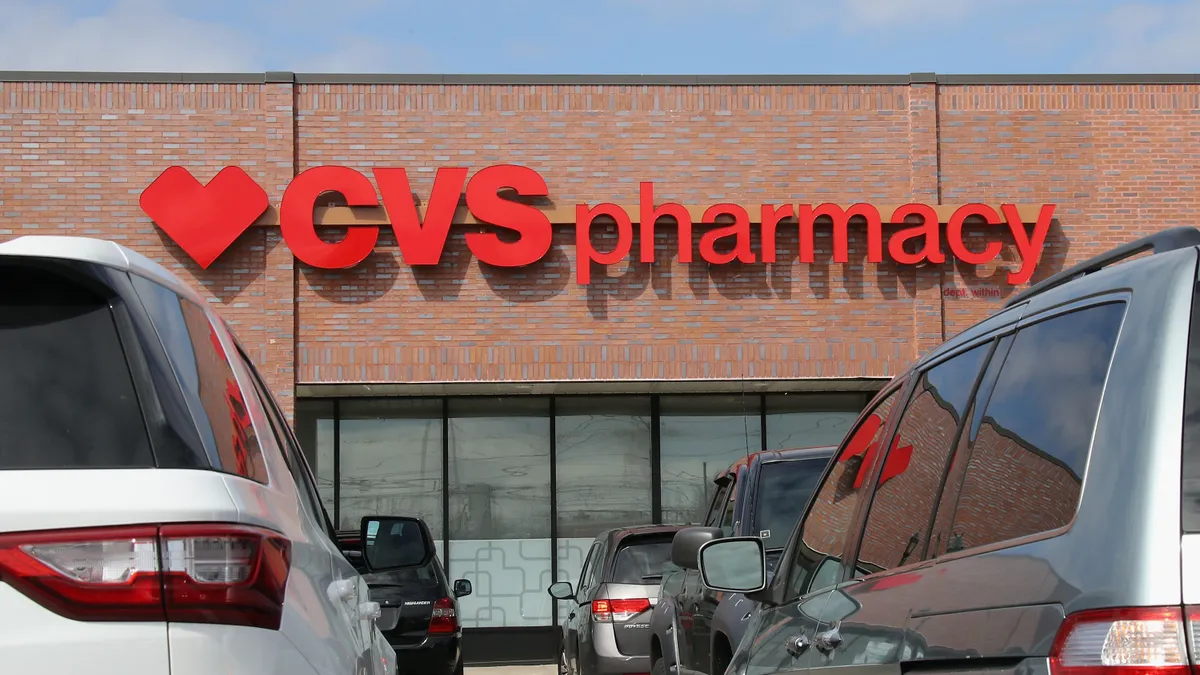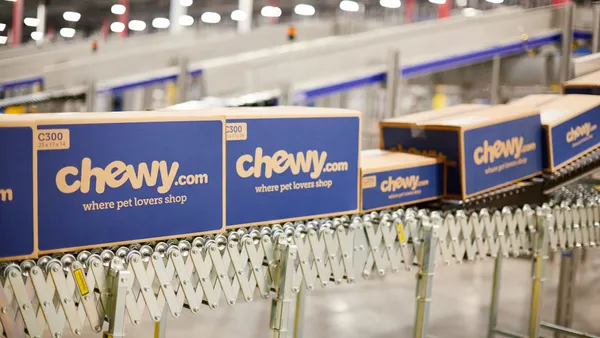Dive Brief:
-
CVS Health on Wednesday reported that second quarter net revenues rose 2.2% or $1 billion to $46.7 billion, up from $45.7 billion in the year-ago quarter.
-
Same-store sales in the quarter rose 5.9% as pharmacy same-store sales rose 8.3%, driven mostly by same-store prescription volume growth of 9.5% that was partially offset by reimbursement pressure and recent generic drug introductions. Front-store same-store sales fell 1% in the quarter, in part due to softer customer traffic, partially offset by an increase in basket size, according to a company press release.
-
The company's merger with health insurer Aetna, which awaits regulatory approval, continues to be expensive. Consolidated operating loss for the quarter was $1.6 billion, including $39 million in transaction and integration costs related to the proposed acquisition, along with a $3.9 billion goodwill impairment charge in its long term care division.
Dive Insight:
There are few signs of CVS's pivot to heath and medical care more vivid than its proposed takeover of Aetna. Despite the size of the deal, and the debt and costs it requires, many analysts see great benefit from that move.
Moody's Investors Service analysts, for example, have faith in the deal. In a report this week, Moody's said that although leverage "will initially rise significantly before easing..." both companies' strength plus CVS's "past strengths in extracting synergies from acquisitions [are] an encouraging sign."
On Wednesday, Moody's Vice President Mickey Chadha said that CVS' second quarter "demonstrates that consumers continue to fill their prescriptions at a CVS location despite all the noise associated with e-commerce disruption of the prescription drug retail sector," according to comments emailed to Retail Dive.
Indeed, the company's conference call with analysts on Wednesday, as in recent quarters, was dominated by healthcare talk, both from executives and analysts. The discussion centered around not just pharmacy sales or clinical services like skilled nursing, but also innovations, like strides the company says it's made in kidney disease care and its role in driving down consumer healthcare costs. Even its e-commerce strategy is tilted toward its healthcare services and sales, according to a June report from Gartner L2, although that may present a challenge to Amazon's healthcare push.
The company on Wednesday also announced that MinuteClinic, its retail medical clinic centered at many stores, is rolling out a virtual healthcare offering for patients with minor illnesses and injuries, skin conditions and other wellness needs. MinuteClinic Video Visits is a "telehealth" offering that provides remote access to healthcare services 24 hours a day, seven days a week from a mobile device.
But CVS appears to be preoccupied with its healthcare operations to the detriment of its retail side. Once again, front-of-store traffic in the second quarter was soft. The retailer's approach to the front of its stores is in stark contrast to a new drugstore concept in Paris unveiled this summer by French mass merchant Casino Group and L'Oréal France. That means that shoppers are increasingly turning to the retailer out of necessity and not desire, warns GlobalData Retail Managing Director Neil Saunders.
"Across the US, beauty sales were boosted by consumers with more money to spend; snacks and food treats saw good uplifts; and, things like greetings cards and stationery witnessed some growth. That CVS did not capitalize on these opportunities says a lot about the state of its retail offer," he said in comments emailed to Retail Dive. "While there is nothing wrong with trading on convenience, not drawing in customers who want to shop for different reasons means that CVS is missing out on a large slice of trade. Such a position also means CVS Is vulnerable to rivals, both physical stores that open in close proximity and the rise of certain categories online."














